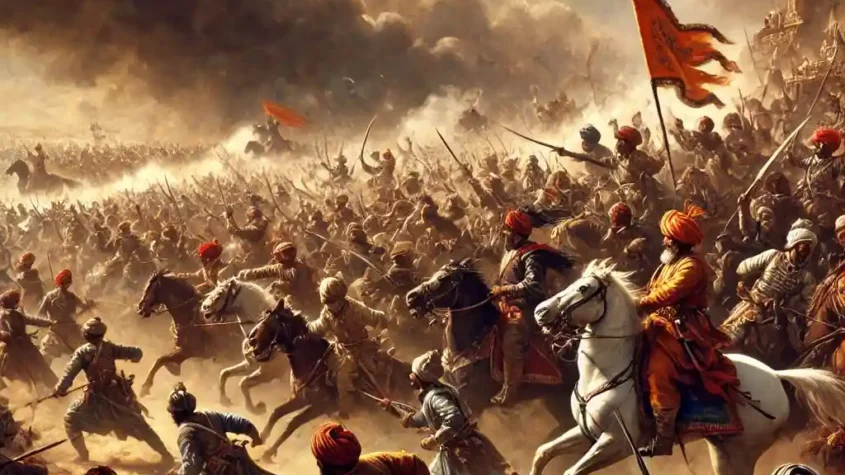
The Battle of Panipat holds significant importance in Indian history due to its profound impact on the subcontinent’s political landscape. This pivotal encounter, fought in 1526, marked the beginning of the Mughal Empire in India and reshaped the nation’s future. Understanding this battle provides insight into the strategies, stakes, and consequences that resonate even today.
Known for its strategic location, Panipat has been the site of three major battles, each influencing the course of history. The first battle established the Mughals as a dominant force, while subsequent conflicts showcased the fierce rivalries of the era. This context invites a closer look at the events and their implications for subsequent generations.
Exploring the intricacies of the Battle of Panipat reveals the stakes involved, including alliances and the role of individual leaders. The effects of this battle were not just immediate; they echoed through centuries, shaping the culture and politics of India. Understanding its significance encourages a deeper appreciation for the historical narratives that have shaped the modern nation.
History of the Egerp Panipat
The history of Egerp Panipat reflects a rich tapestry of cultural and military significance. Key moments include its founding and the major battles that shaped its legacy.
Founding and Origin
Egerp Panipat was established as a strategic settlement, leveraging its geographical location. It served as a key crossroads for trade and military movement. The origins of the area date back to earlier settlements, with archaeological evidence indicating human activity for centuries.
Over time, Egerp Panipat became recognized for its agricultural productivity. The fertile land attracted various communities, leading to its growth as a regional hub. The leadership during its founding period played a pivotal role in uniting diverse groups under a common identity.
Major Battles and Conflicts
Egerp Panipat witnessed several significant battles that altered its trajectory. Among the most notable was the Battle of Panipat in 1761, which involved major powers of the time. This conflict was pivotal, as it determined the fate of the region for many years.
Another key confrontation was the Second Battle of Panipat in 1556. This battle solidified the Mughal Empire’s dominance in Northern India. Each of these conflicts brought about profound shifts in political and social structures, ultimately shaping the historical narrative of Egerp Panipat.
Modern Egerp Panipat
Modern Egerp Panipat showcases significant advancements in economic development, cultural richness, and urban infrastructure improvements. The city’s evolution reflects its historical context while adapting to contemporary needs.
Economic Development
Egerp Panipat has seen substantial economic growth in recent years. The introduction of various industries has contributed to job creation and boosted local income levels. The textile industry remains a cornerstone, leveraging the city’s rich heritage in weaving and manufacturing.
In addition, new manufacturing units and technological firms have emerged, diversifying the economic landscape. Local government initiatives encourage small and medium-sized enterprises (SMEs), fostering entrepreneurship and innovation. These changes create a dynamic economy resilient to market fluctuations, increasing the overall standard of living for residents.
Cultural Significance
The cultural fabric of Egerp Panipat is vibrant and multifaceted. Festivals such as Baisakhi and Diwali are celebrated with fervor, drawing both local and tourist participation. The city hosts numerous cultural events that highlight its historical significance and contemporary artistic expressions.
Artisans continue to preserve traditional crafts, such as handloom weaving, while modern art galleries promote contemporary artists. This interplay of history and modernity enriches the cultural experience. Public spaces, museums, and community centers provide platforms for cultural exchange and education, fostering a sense of identity among residents.
Urbanization and Infrastructure
Urbanization in Egerp Panipat presents both challenges and opportunities. Rapid population growth has necessitated significant upgrades in infrastructure, including roads, public transport, and sanitation systems.
Government investments have focused on smart city initiatives, improving connectivity and access to services. Green spaces and recreational areas are being developed to enhance the quality of urban life.
Collaboration with private sectors is also evident, leading to projects that address housing shortages and support sustainable urban development. As urban planning evolves, the city aims to meet the demands of a modern population while preserving its historical essence.
Low-Cost SEO Packages: A Comprehensive Guide to Affordable SEO Solutions
In today’s digital age, having a strong online presence is essential for any business, whe…










